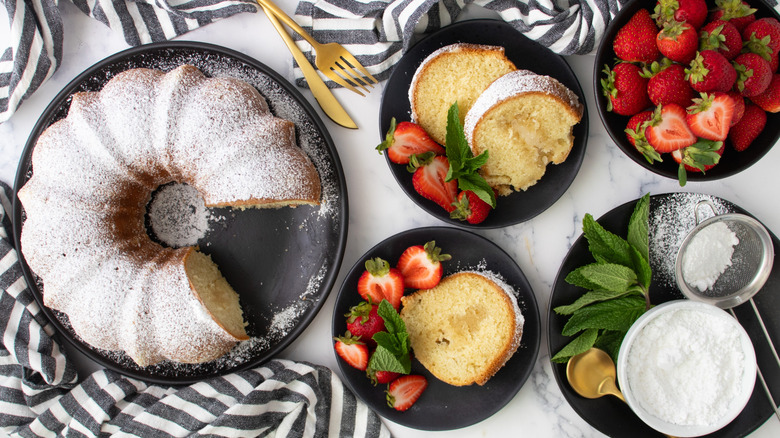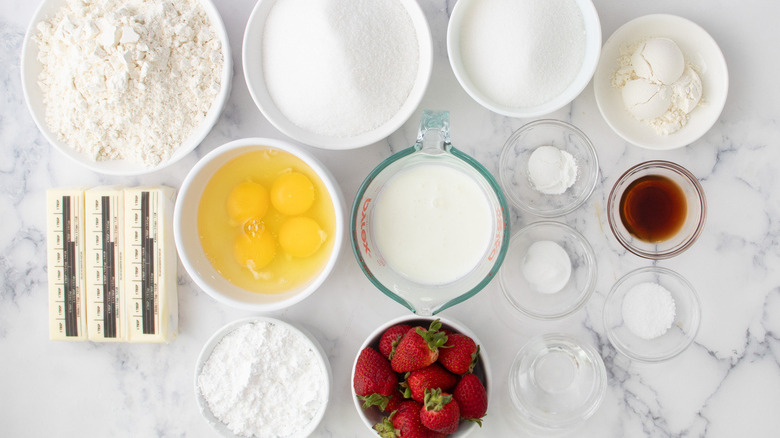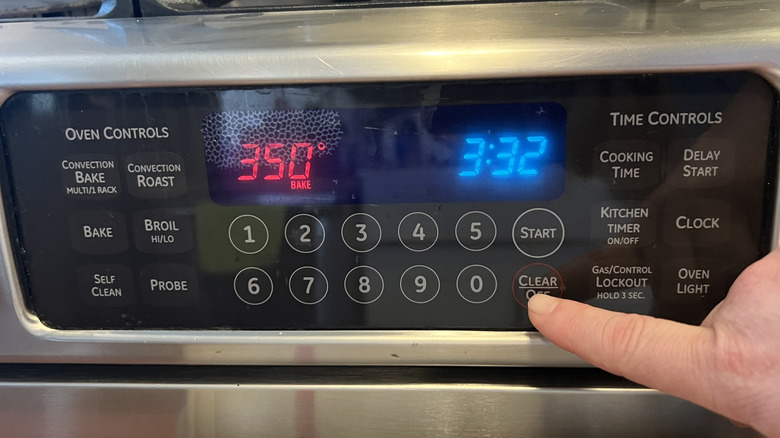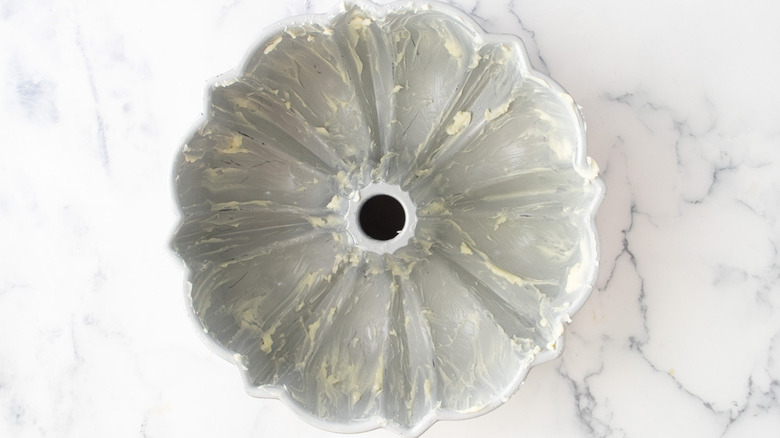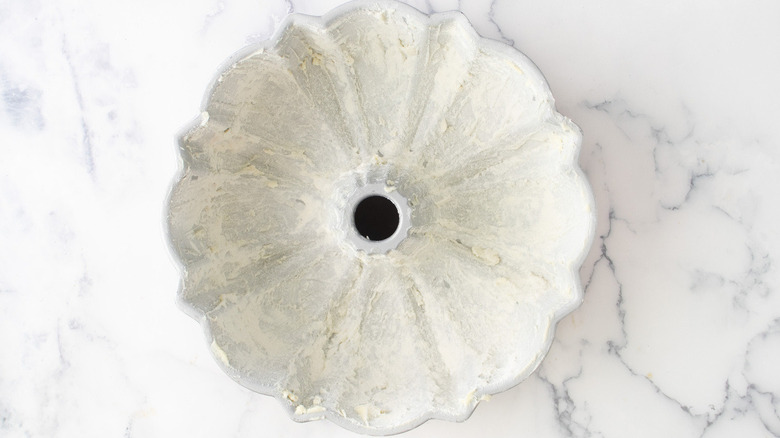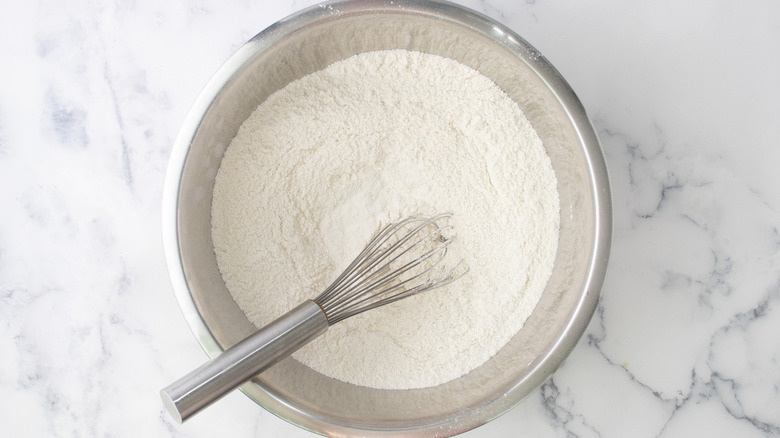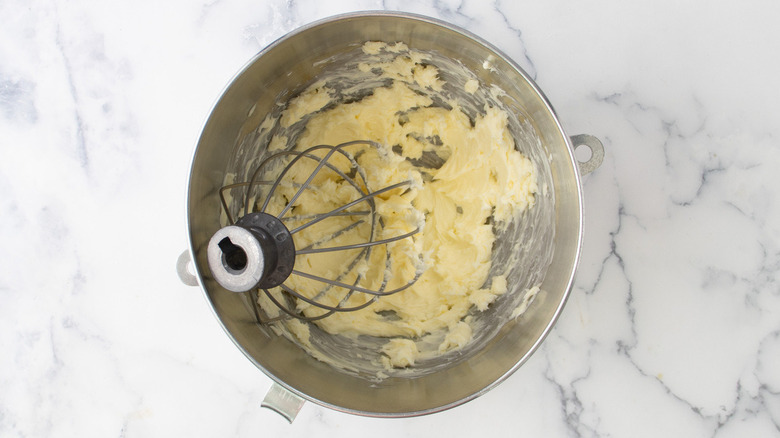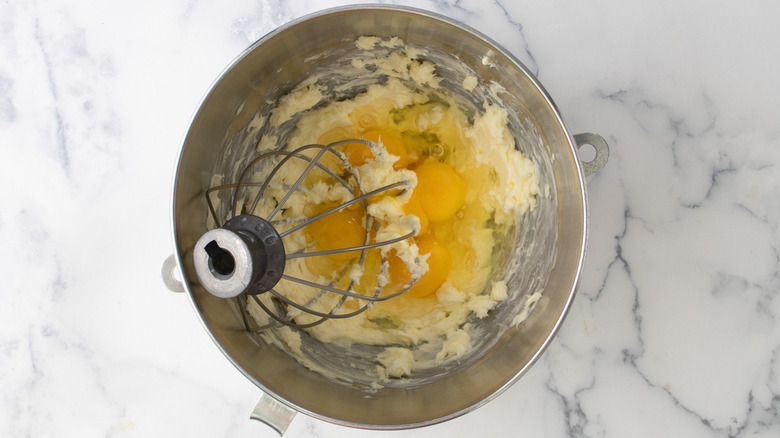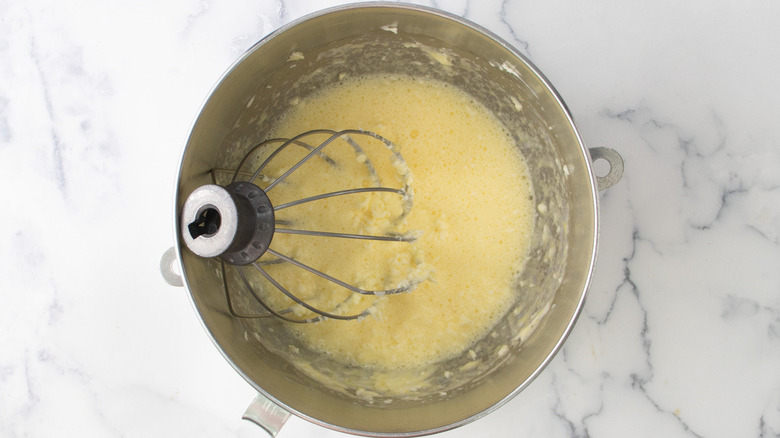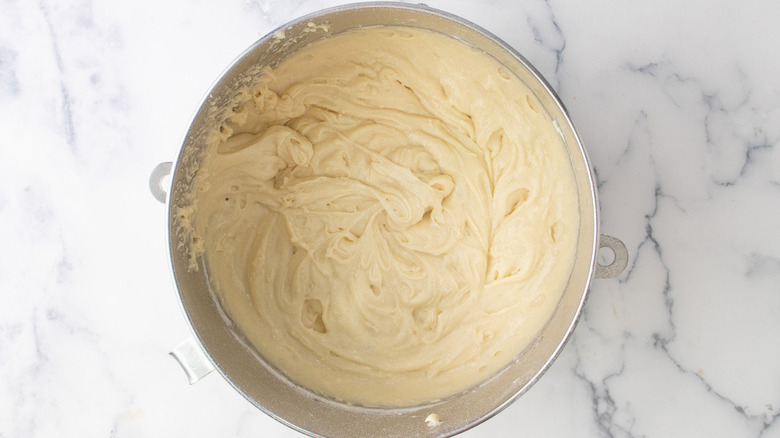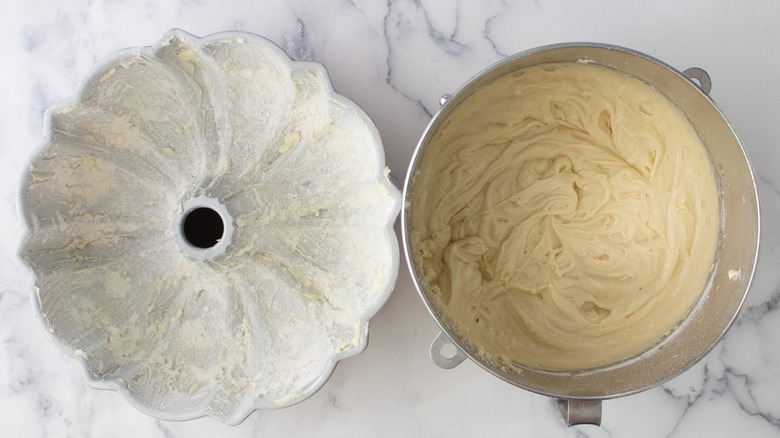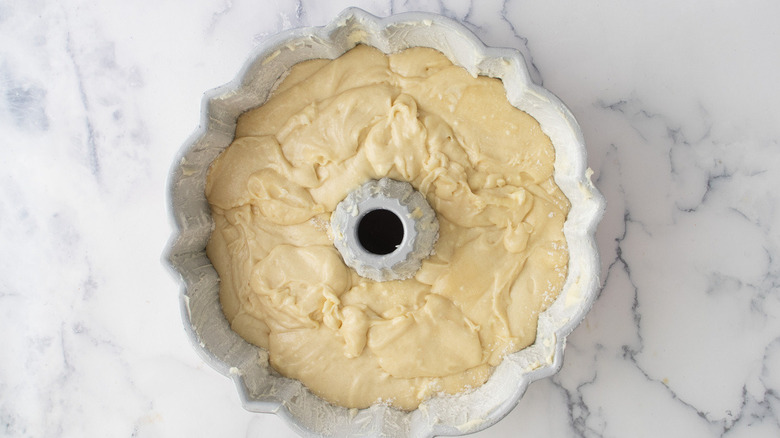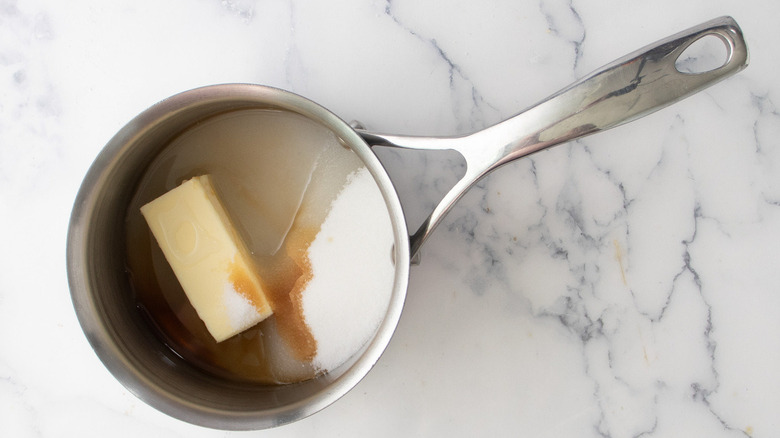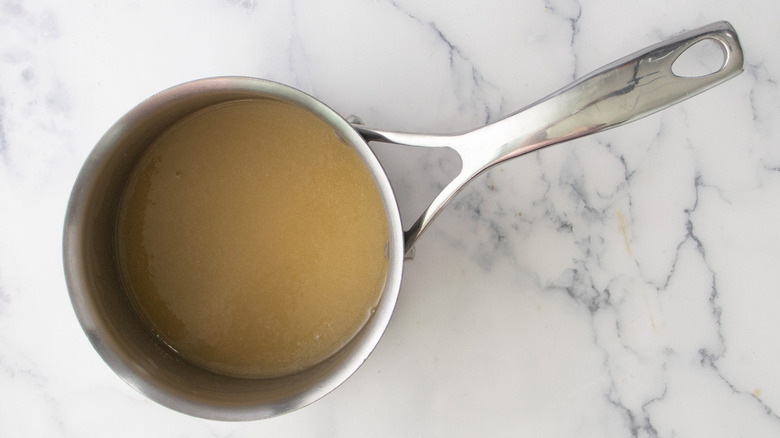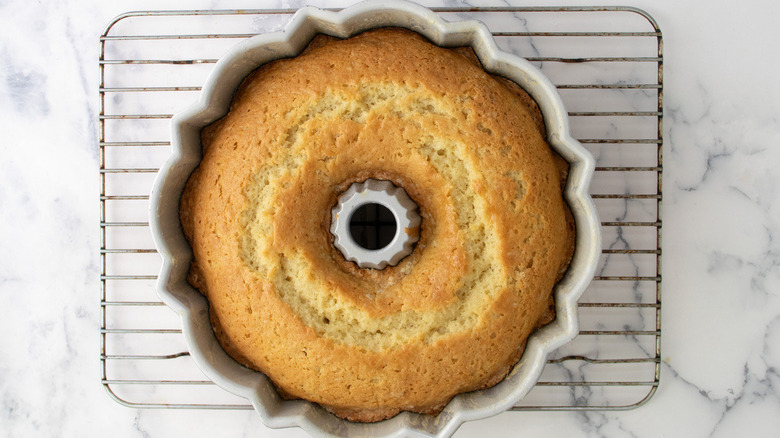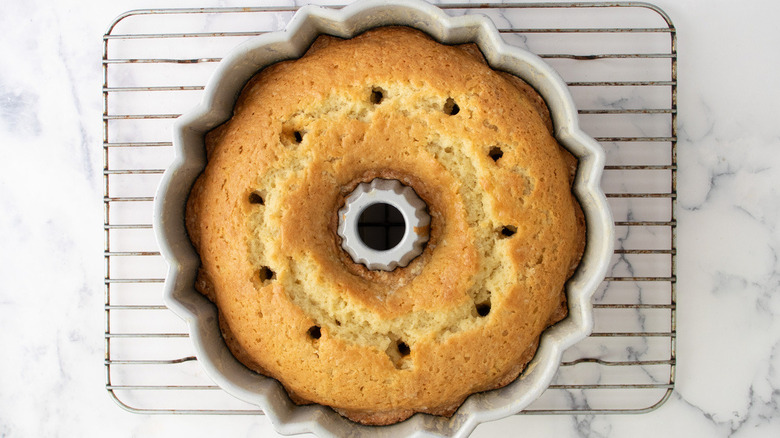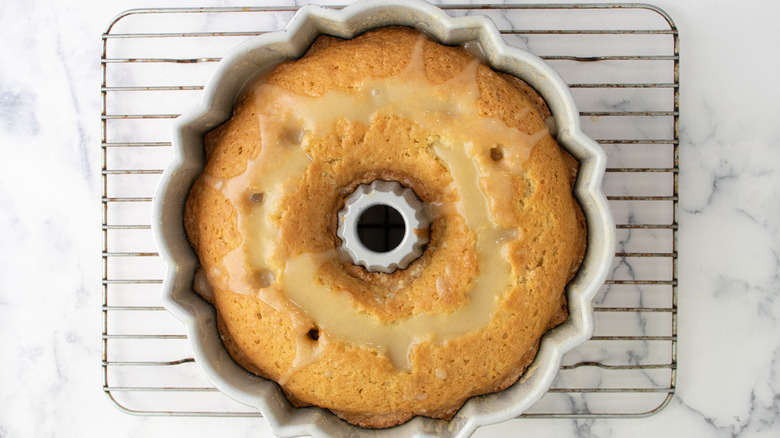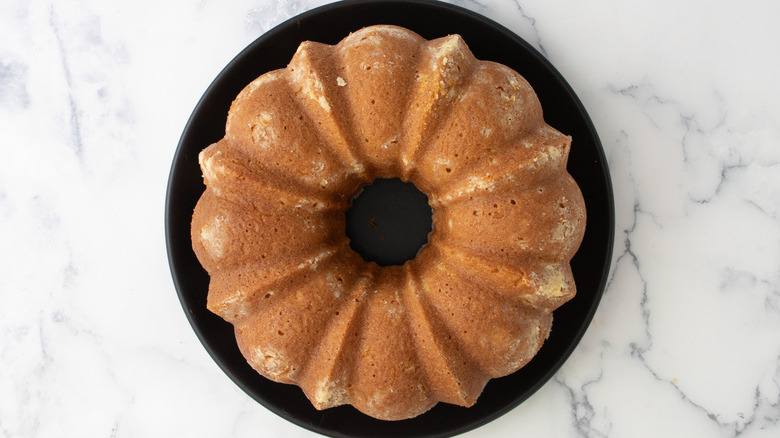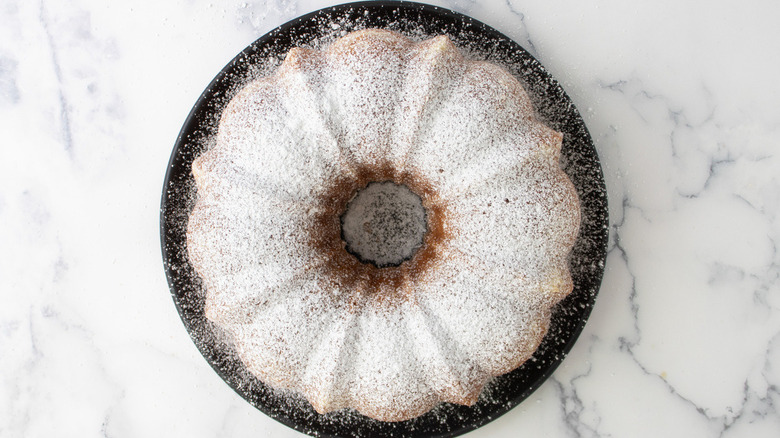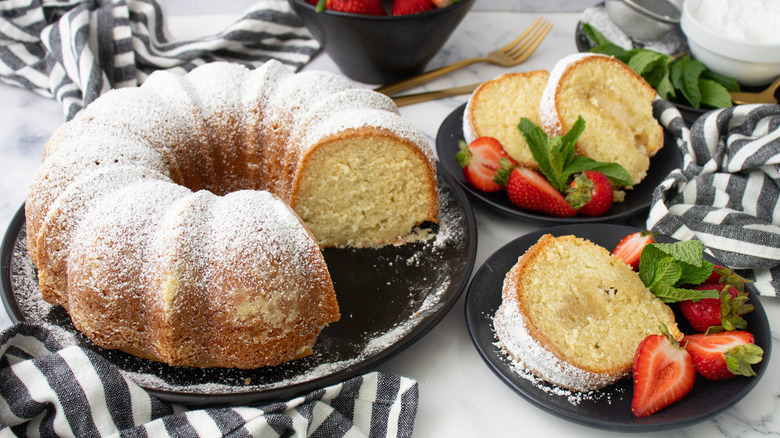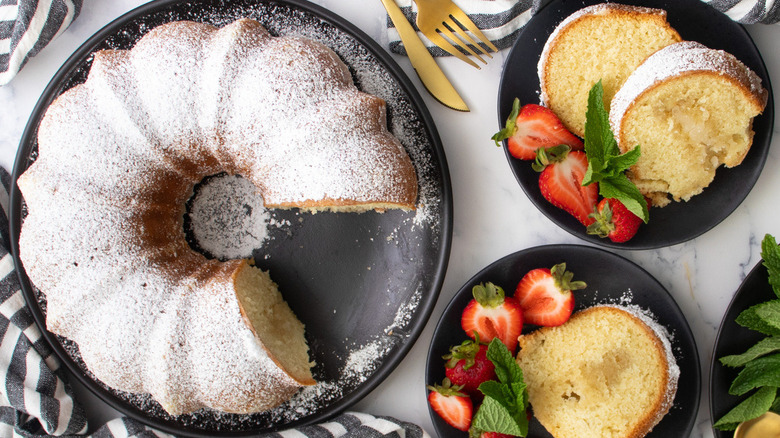Sugary Kentucky Butter Cake Recipe
The state of Missouri can boast not one, but two regional butter cake styles. The first, St. Louis gooey butter cake, dates back to the 1930s and was invented in its eponymous city, while the second, Kentucky butter cake, was created three decades later in Platte City on the western side of the state. Though the developer inexplicably named her cake after a different state, her recipe would go on to win the 1963 Pillsbury Bake-off.
Patterson Watkins, who came up with her own take on this Bundt cake, says, "To give you an idea of how this cake tastes (and why it endeared itself so much to me), do you remember those butter cookies that came out of the tin that everyone's auntie or grandma used to store sewing supplies in? This cake has that kind of flavor-vibe, super buttery and satisfyingly sweet (and a similar happy nostalgia to that of opening that tin and finding cookies instead of sewing supplies)."
Patterson tells us the cake is "moist, dense, almost poundcake-like and it even develops a little crinkly, crunchy crust around the edges." While it can be an after-dinner dessert, its doughnut-like glaze also makes it well-suited for breakfast or brunch. It's sturdy, and something you can take to barbecues or bake sales. While the cake tastes fantastic plain, you can dress it up with whipped cream or a drizzle of caramel or chocolate sauce, while berries can add a tart note to contrast the rich cake.
Collect the ingredients for the sugary Kentucky butter cake
The butter cake is made with flour, granulated sugar, salt, baking powder, baking soda, unsalted butter, eggs, and buttermilk and flavored with vanilla. You'll also need powdered sugar to sprinkle over the top once the glaze has set.
Step 1: Turn on the oven
Preheat the oven to 350 F.
Step 2: Butter the Bundt pan
To prep the Bundt pan (I used a 10-inch Bundt), generously coat the inside with the butter, making sure to get into every nook and cranny.
Step 3: Flour the Bundt pan
Sprinkle the pan with flour, tilting and shaking the pan to thoroughly coat. Discard any excess (unstuck) flour and set the pan aside.
Step 4: Combine the dry ingredients
To make the batter, place flour, granulated sugar, salt, baking powder, and baking soda in a large bowl. Whisk to combine.
Step 5: Beat the butter
Place the butter in a mixer, fitted with the whisk attachment, and beat until fluffy.
Step 6: Mix in the eggs
Add the eggs to the mixing bowl and whisk to combine (the mix will be a little chunky, that is ok).
Step 7: Stir in the buttermilk and vanilla
Add the buttermilk and vanilla to the bowl and whisk to combine.
Step 8: Combine the wet and dry ingredients
Add the dry mix to the mixing bowl and stir to create a thick batter.
Step 9: Spoon the batter into the pan
Transfer the batter to the prepared Bundt pan, making sure to spread the batter out as evenly as possible.
Step 10: Bake the cake
Place the pan in the oven and bake for 1 hour or until golden brown and cooked through.
Step 11: Mix the glaze
While the cake is baking, place the glaze ingredients (butter, granulated sugar, 2 tablespoons water, and vanilla extract) in a small saucepan.
Step 12: Heat the glaze
Warm the glaze over medium-low heat, whisking frequently, until combined, about 5 minutes (do not boil). (You want the glaze to just coat the back of a spoon. If the glaze is too thick, add another tablespoon of water to thin). Set aside.
Step 13: Cool the cake
Once the cake has baked, remove it from the oven, and set aside on a wire rack to cool for 10 minutes.
Step 14: Perforate the cake
Using the handle of a wooden spoon (or another rounded object) poke holes into the cake, piercing only ¾ of the way through.
Step 15: Glaze the cake
Pour the glaze into the holes and set the cake aside to cool completely, about 1-2 hours.
Step 16: Remove the cake pan
Once cooled, invert the pan, placing the cake on a large plate or serving platter.
Step 17: Top the cake with powdered sugar
Sprinkle the cake with powdered sugar before slicing and serving.
Sugary Kentucky Butter Cake Recipe
A Kentucky butter cake is a moist, dense cake baked up in a Bundt pan and topped with a sugary glaze. Serve it for brunch, a snack, or a show-stopping dessert.
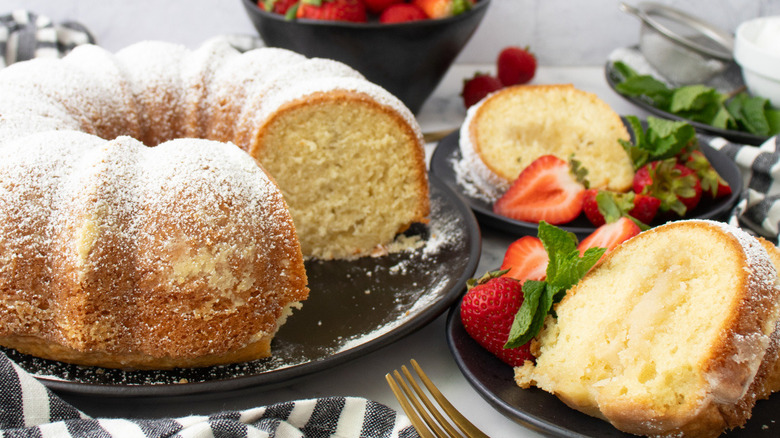
Ingredients
- For the Bundt pan prep
- 3 tablespoons butter, softened
- 3 tablespoons all-purpose flour
- For the cake batter
- 3 cups all-purpose flour
- 2 cups granulated sugar
- 1 teaspoon salt
- 1 teaspoon baking powder
- ½ teaspoon baking soda
- 1 cup (2 sticks) unsalted butter, softened
- 4 large eggs
- 1 cup buttermilk
- 2 teaspoon vanilla extract
- For the butter glaze
- 5 tablespoons unsalted butter
- ¾ cup granulated sugar
- 2 tablespoons water
- 2 teaspoons vanilla extract
- ¼ cup powdered sugar, for topping
Optional Ingredients
- Berries for serving
Directions
- Preheat the oven to 350 F.
- To prep the Bundt pan (I used a 10-inch Bundt), generously coat the inside with the butter, making sure to get into every nook and cranny.
- Sprinkle the pan with flour, tilting and shaking the pan to thoroughly coat. Discard any excess (unstuck) flour and set the pan aside.
- To make the batter, place flour, granulated sugar, salt, baking powder, and baking soda in a large bowl. Whisk to combine.
- Place the butter in a mixer, fitted with the whisk attachment, and beat until fluffy.
- Add the eggs to the mixing bowl and whisk to combine (the mix will be a little chunky, that is ok).
- Add the buttermilk and vanilla to the bowl and whisk to combine.
- Add the dry mix to the mixing bowl and stir to create a thick batter.
- Transfer the batter to the prepared Bundt pan, making sure to spread the batter out as evenly as possible.
- Place the pan in the oven and bake for 1 hour or until golden brown and cooked through.
- While the cake is baking, place the glaze ingredients (butter, granulated sugar, 2 tablespoons water, and vanilla extract) in a small saucepan.
- Warm the glaze over medium-low heat, whisking frequently, until combined, about 5 minutes (do not boil). (You want the glaze to just coat the back of a spoon. If the glaze is too thick, add another tablespoon of water to thin). Set aside.
- Once the cake has baked, remove it from the oven, and set aside on a wire rack to cool for 10 minutes.
- Using the handle of a wooden spoon (or another rounded object) poke holes into the cake, piercing only ¾ of the way through.
- Pour the glaze into the holes and set the cake aside to cool completely, about 1-2 hours.
- Once cooled, invert the pan, placing the cake on a large plate or serving platter.
- Sprinkle the cake with powdered sugar before slicing and serving.
Nutrition
| Calories per Serving | 548 |
| Total Fat | 25.1 g |
| Saturated Fat | 15.0 g |
| Trans Fat | 0.0 g |
| Cholesterol | 123.8 mg |
| Total Carbohydrates | 75.0 g |
| Dietary Fiber | 0.9 g |
| Total Sugars | 49.6 g |
| Sodium | 335.2 mg |
| Protein | 6.4 g |
Why does a Bundt pan need to be floured as well as greased?
The reason you need to flour a Bundt pan is because those ridges in the sides that make the cake so pretty also make it difficult to remove the cake intact. Butter alone won't be enough, and neither will oil. Patterson warns, "Oil just doesn't have the stay-put power of softened butter. You'll just end up with a puddle of oil at the bottom of your Bundt and a stuck cake." Even cooking spray won't do the trick unless you use a spray that also includes flour. One well-known brand of floury spray, Baker's Joy, is even endorsed by Bundt pan maker Nordicware. Baker's Joy can be kind of pricey, though, so you may want to make your own pan release by mixing flour, vegetable oil, and melted shortening in a 1:1:1 ratio and applying it to the Bundt pan with a pastry brush.
If you stick with the tried and true two-step grease and flour process and want to add an extra chocolatey element to a chocolate Bundt cake, use cocoa powder instead of flour. If you're making Bundt cake from a boxed mix, you can also use a small amount of the mix to flour your pan, thus ensuring a color and flavor match.
Can I bake this cake without a Bundt pan?
Even though Kentucky butter cake purists may insist that a Bundt pan is necessary to recreate the Kentucky butter cake in all its mid-century glory, most people will be perfectly happy with this delicious cake even with slightly less frills and ornaments. A tube pan makes an acceptable Bundt-adjacent alternative, while you can also DIY your own makeshift Bundt pan by placing a can in the center of a large round cake pan and weighing it down with dried beans or rice.
If you don't mind ditching the ring shape, you can use that round cake pan as-is, while a pair of smaller round pans would allow you to break with tradition and turn the dessert into a Kentucky butter layer cake. If you do go this route, cream cheese frosting would make a great filling because the hint of sourness will help temper some of the sweetness from the sugary glaze. You could also use a loaf pan since the cake's texture is already fairly similar to that of pound cake. If you opt to bake the batter in a muffin pan, though, don't frost the cupcakes — stick with the glaze and powdered sugar topping and call them tea cakes instead.
